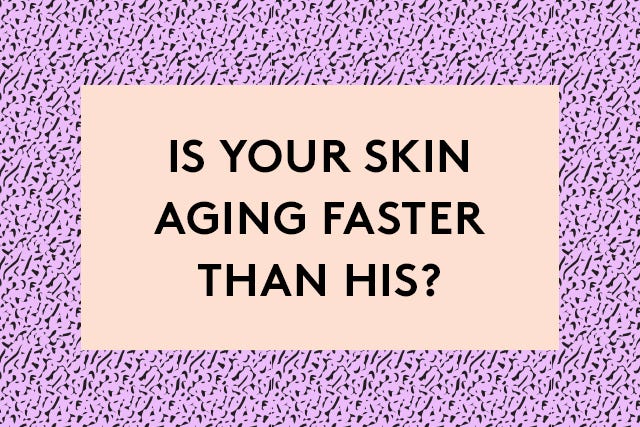Is A Man’s Skin Really Different From A Woman’s?
 Illustrated by Anna Sudit.
Illustrated by Anna Sudit. Illustrated by Anna Sudit.
Illustrated by Anna Sudit.Is his skin oilier than ours?
Men typically have larger oil glands and the cells in the sebaceous (oil) glands have more positive receptors for androgens. So, men usually produce more sebum than women and therefore have oilier skin. For women, the female sex hormone, estrogen, makes our sebum thinner; as his is thicker, he can get more congestion (like blackheads and angry breakouts). This will be more prevalent during puberty due to the influx of testosterone, but as levels remain higher in men, it’s one of the reasons why men have long-lasting acne. Interestingly, mostly men tend to get a condition known as rhinophyma, which is found in extreme cases of rosacea and is indicated by a red, swollen, bulbous nose with enlarged sebaceous glands. This was once linked to excessive consumption of alcohol, but is truthfully only aggravated by drinking and is linked to androgens.
 Illustrated by Anna Sudit.
Illustrated by Anna Sudit.Who’s dewier?
Men typically have more lactic acid in their sweat, which accounts for a lower pH (.05 lower) when compared to female sweat. Men usually sweat more than twice as much as women, and are also more prone to sweating, which is stimulated by an increase in body temperature. However, male skin appears to be better hydrated thanks to the excess of oil production. It’s also possible that the excessive sweating and production of lactic acid, a known natural humectant for the skin, is responsible for the level of tissue hydration.
 Illustrated by Anna Sudit.
Illustrated by Anna Sudit.Is your skin aging faster than his?
Both men and women lose about one percent of their collagen per year after their 30th birthday. For women, however, this escalates significantly in the first five years after menopause, slowing down to a loss of two percent per year. Regardless of age, thanks to those androgens again, collagen and elastin don’t degrade as rapidly in male skin. Plus, testosterone specifically creates a denser network of fibers and thicker skin.






